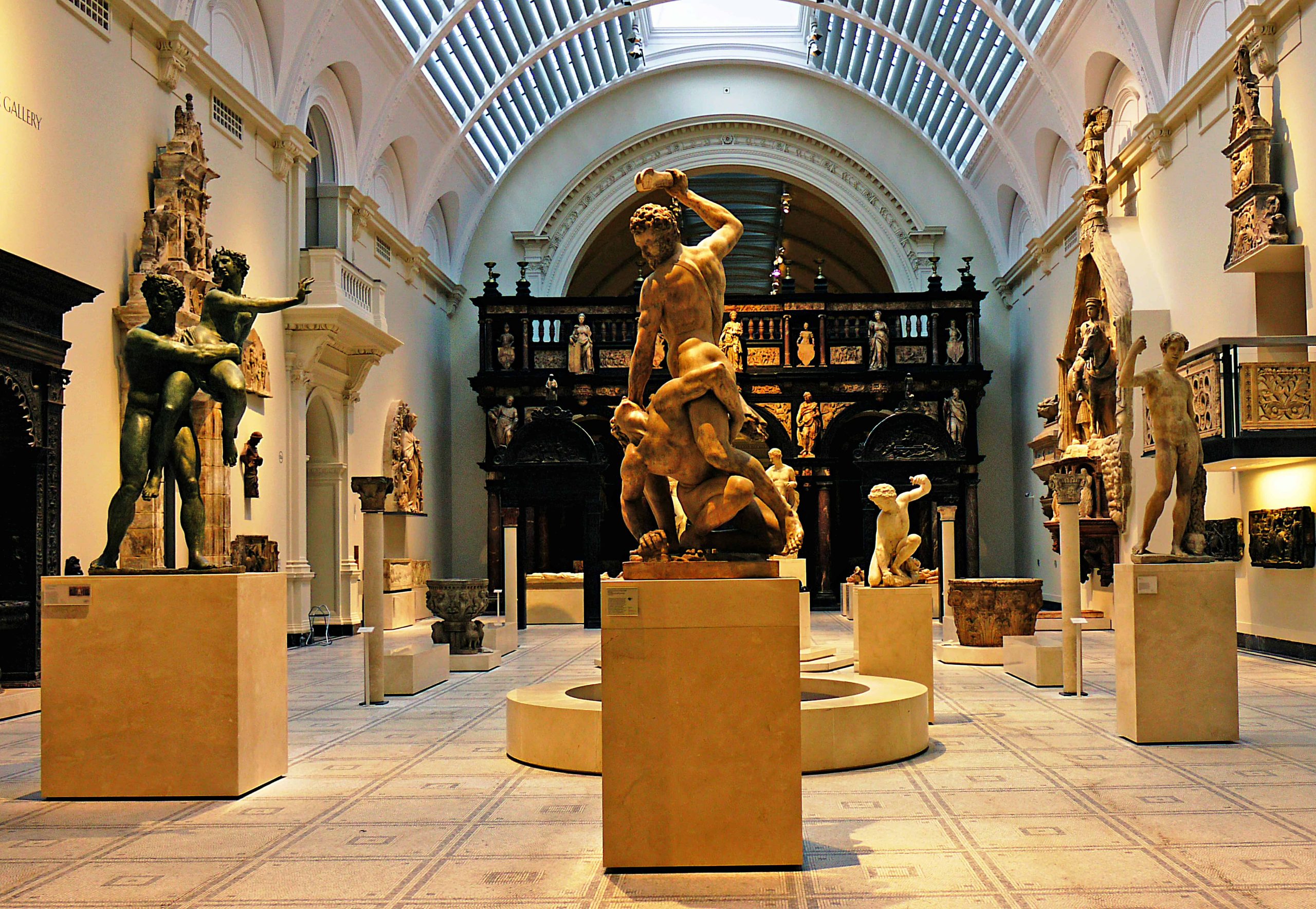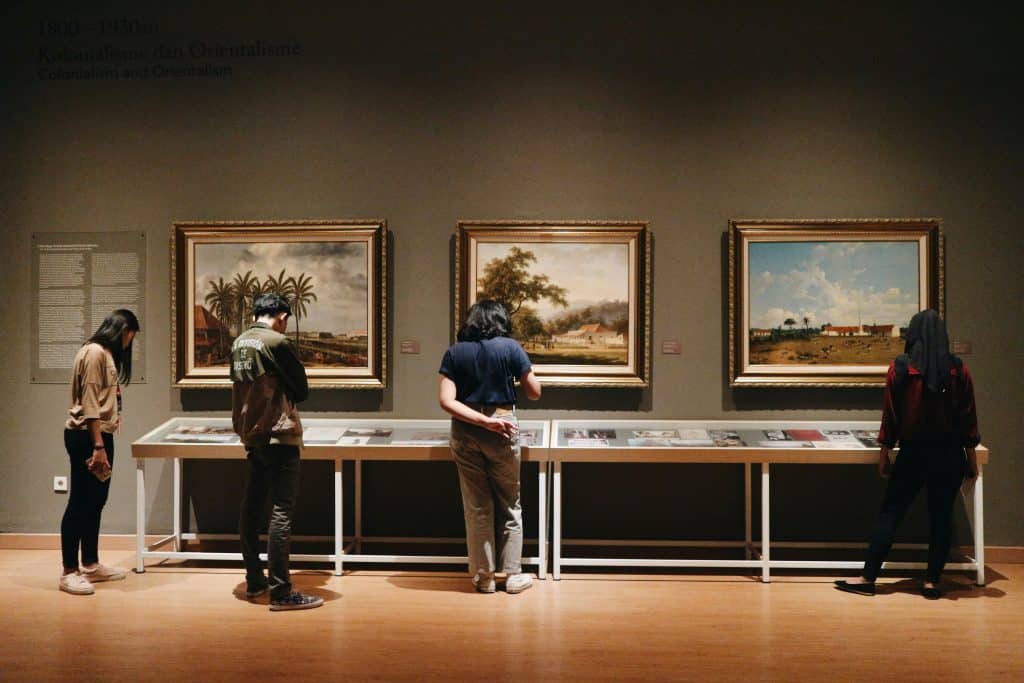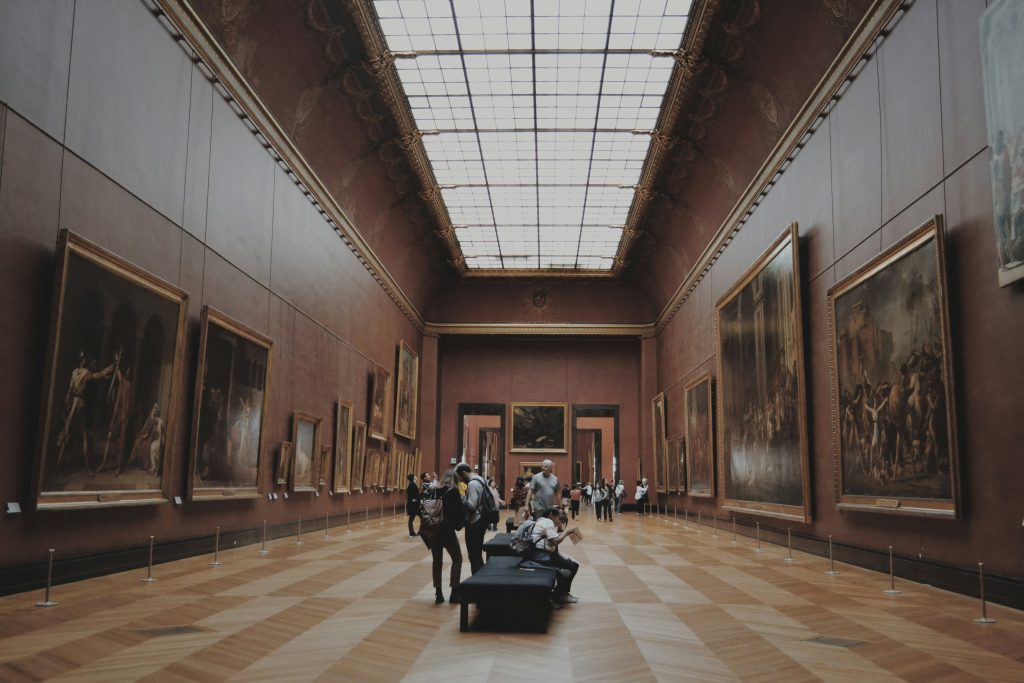
22 Feb The Role of Museums in Cultural Exchange
In our increasingly interconnected world, the significance of acknowledging and valuing diverse cultures cannot be overstated. As globalization continues to shrink geographical boundaries and facilitate unprecedented connectivity, the need for cross-cultural understanding becomes ever more urgent. At the heart of this endeavor lies the concept of cultural exchange, a dynamic process characterized by the mutual sharing and integration of traditions, beliefs, and artistic expressions. Thus, museums emerge as venerable institutions entrusted with the profound responsibility of preserving, celebrating, and interpreting the rich tapestry of human creativity. Serving as veritable bastions of cultural heritage, museums offer invaluable insights into the myriad facets of human experience, spanning epochs and continents. Through their diverse collections and interpretive programs, they facilitate dialogue, stimulate critical inquiry, and engender a deeper appreciation for the kaleidoscopic array of cultural expressions that define our shared humanity.
Museums as Platforms for Cultural Artifacts

Photo by Zalfa Imani
Collecting and Preserving
Museums stand as revered institutions, often revered as the treasure troves of human civilization. They fulfill a crucial role in collecting and preserving a vast array of cultural artifacts spanning epochs and continents. From the relics of ancient civilizations to the avant-garde creations of today, museums serve as custodians of human heritage, safeguarding tangible manifestations of diverse cultures. Each artifact housed within these hallowed halls tells a story, embodying the traditions, beliefs, and histories of peoples around the world. However, the process of collection and preservation is not without its complexities. The issue of ownership and repatriation looms large, challenging museums to navigate ethical dilemmas as they seek to preserve and protect cultural treasures for future generations.
Exhibition and Interpretation
Within the walls of museums, art and artifacts transcend their static forms, coming alive through meticulous curation and presentation. Curators wield significant influence in shaping cultural understanding by carefully selecting and arranging exhibits. Through their choices, they illuminate both the shared human experiences that bind us together and the unique expressions that define each culture. Exhibitions serve as windows into different worlds, fostering empathy and appreciation for diverse perspectives. Moreover, museums go beyond mere display, offering interactive exhibits and educational programs that invite visitors to actively engage with the material. Through these initiatives, museums transform into dynamic spaces for learning and exploration, enriching the cultural landscape and fostering a deeper understanding of our shared humanity.
Art as a Language for Cultural Understanding

Photo by antonio molinari
The Universality of Human Emotions
Art serves as a universal language that transcends geographic and temporal boundaries. Across cultures and throughout history, human beings have expressed their emotions and experiences through various artistic mediums such as visual arts, music, dance, and literature. Through these forms of expression, individuals can communicate and connect with others on a profound level, regardless of linguistic or cultural differences. For example, a painting depicting love or loss can evoke similar emotions in individuals from diverse backgrounds, highlighting the commonality of human experience. Museums play a crucial role in recognizing and showcasing these shared human experiences, bringing people together by celebrating our collective humanity.
Cultural Specificity
While universal emotions serve as a common thread among humanity, art also reflects the unique perspectives and contexts of different cultures. Symbols, motifs, and artistic techniques carry layers of meaning that are often deeply rooted in specific cultural traditions and historical narratives. Understanding these cultural nuances enriches the viewer’s appreciation and interpretation of artworks. Museums serve as repositories of cultural knowledge, offering visitors insights into the historical, social, and political contexts that shape artistic expression. By contextualizing artworks within their cultural frameworks, museums empower audiences to engage critically with diverse artistic traditions and broaden their understanding of the world. Through this exploration of cultural specificity, individuals gain a deeper appreciation for the richness and diversity of human creativity across time and place.
Key Takeaways
Exploring innovative approaches for understanding the influence of museums on cultural exchange:
- Intercultural Collaborations: Museums initiate joint exhibitions that bring together artifacts from different cultures, fostering dialogue and mutual understanding.
- Community Outreach Programs: Engaging diverse audiences through outreach initiatives makes museums more accessible and relevant to local communities.
- Digital Platforms: Utilizing technology to transcend physical boundaries, enabling museums to reach a global audience and facilitate cross-cultural interactions.
Challenges and Opportunities

Photo by Amy-Leigh Barnard
Addressing Biases and Stereotypes
Museums hold the responsibility of actively dismantling biases and stereotypes that may be entrenched within their narratives. By challenging and interrogating the narratives they present, museums can foster a more inclusive environment that accurately reflects the diverse spectrum of human experiences. This involves promoting inclusive representation across their collections and exhibitions, amplifying the voices of marginalized communities, and acknowledging the complexities of identity and culture. Furthermore, museums must undertake the critical task of deconstructing colonial perspectives and power dynamics that have historically shaped their collections and exhibitions. This process involves engaging in dialogue, reevaluating curatorial practices, and collaborating with diverse communities to ensure that museum spaces are inclusive and equitable for all visitors.
Accessibility and Engagement
Ensuring accessibility to a broader audience is essential for museums to fulfill their educational and cultural missions. To achieve this goal, museums must implement innovative strategies that cater to the diverse needs and interests of their visitors. This includes providing multilingual resources and interpretation services to accommodate linguistic diversity, offering culturally relevant programs and exhibitions that resonate with different communities, and leveraging interactive technologies to enhance visitor engagement. By embracing participatory exhibition formats, museums can empower visitors to actively engage with the content, encouraging dialogue, critical thinking, and personal reflection. Moreover, museums can cultivate inclusive spaces where visitors feel welcomed and valued, regardless of their background or abilities. Through these efforts, museums can broaden their reach and impact, fostering greater inclusivity, accessibility, and engagement within their communities.

Photo by Ståle Grut
Conclusion
Museums stand as pivotal agents in the intricate web of cultural exchange, acting as custodians, educators, and facilitators. Through their role in collecting, preserving, and exhibiting cultural artifacts, museums offer a tangible representation of the world’s diverse heritage, fostering understanding and appreciation across boundaries. Moreover, by harnessing art as a universal language, museums transcend linguistic and geographical barriers, connecting individuals through shared human experiences while honoring cultural specificity. However, this journey is not without challenges. Museums must confront biases, stereotypes, and historical power dynamics embedded within their narratives, striving for inclusive representation and equitable engagement. Embracing innovation and community involvement, museums can transcend physical limitations, becoming dynamic spaces for dialogue, learning, and mutual enrichment. As guardians of our collective memory and ambassadors of cultural understanding, museums continue to shape and reshape our interconnected world, bridging divides and illuminating the beauty of our shared humanity.
FAQs
Can you provide historical examples of museums facilitating cultural exchange?
The Louvre in Paris stands as a quintessential example of how museums have historically facilitated cultural exchange. With its vast and diverse collection spanning centuries and civilizations, the Louvre has served as a meeting point for people from around the world to appreciate and learn from various cultures. Its exhibits, ranging from ancient Egyptian artifacts to Renaissance masterpieces, have continuously attracted visitors seeking to engage with different cultural narratives. Similarly, the British Museum has played a pivotal role in fostering cross-cultural understanding through its collaborations with international institutions. By lending artifacts and organizing joint exhibitions, the museum has facilitated dialogue and shared appreciation for the richness of global heritage.
How does technology enhance museum experiences?
Technology has revolutionized museum experiences by introducing interactive elements, virtual tours, and digital platforms. These innovations break down geographical barriers and make cultural artifacts accessible to a global audience. Interactive exhibits allow visitors to immerse themselves in history and art, fostering deeper engagement and understanding. Virtual tours offer unprecedented access to museums and galleries worldwide, allowing individuals to explore collections from the comfort of their homes. Digital platforms provide opportunities for museums to showcase their treasures, share educational content, and engage with diverse audiences on social media, thereby democratizing access to culture and knowledge.
How do museums address ethical considerations in presenting cultural artifacts?
Museums address ethical considerations in presenting cultural artifacts through various means. They actively participate in debates surrounding ownership and repatriation, acknowledging the complex histories and power dynamics involved in the acquisition of artifacts. Museums strive to ensure cultural sensitivity in their narratives, acknowledging diverse perspectives and engaging in meaningful dialogue with source communities. Transparency is crucial in addressing ethical concerns, with museums increasingly adopting practices that promote open communication and collaboration. By prioritizing ethical curation, museums seek to uphold the integrity of cultural heritage while fostering mutual respect and understanding among all stakeholders involved.
Uncover the dynamic landscape of contemporary art by exploring the pivotal role of “Creative Collaborations: Enhancing Artist Visibility,” which forges connections, fosters innovation, and amplifies the impact of artistic expressions across diverse audiences and platforms.

